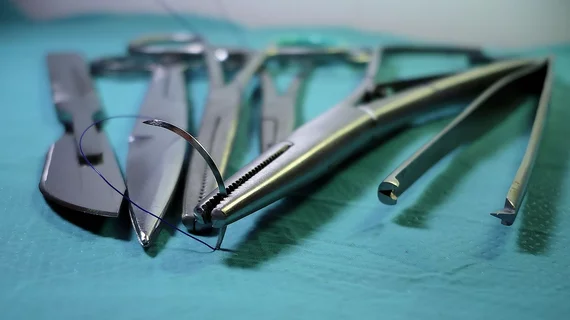Interventional radiology taking on a more prominent role in hospitals during the pandemic
Interventional radiologists are assuming a more prominent role during the pandemic, stepping up to take on extra work in hospitals, experts in the subspecialty assert.
That’s been the case at two academic medical centers in Chicago and Tucson, Arizona, where such physicians have accounted for a greater share of both procedural volume and gross charges. The shift came at a time when trends went the other direction in prominent services, experts wrote Thursday in the Journal of Vascular and Interventional Radiology.
At the universities of Arizona and Chicago, hospital-wide procedural volumes dropped 35% and 69%, respectively, in the month of April. Yet in interventional radiology, the decline was much smaller—at 22% and 35%. Meanwhile, in Tucson total gross procedural charges fell 40% year-over-year, versus just 20% in IR.
“In response to the COVID-19 pandemic, IR has taken a more prominent role in the hospital, accounting for an increased share of both procedural volumes and gross charges…” Mikin Patel, MD, and Osman Ahmed, MD, in interventional radiology at the universities of Arizona and Chicago, respectively, wrote July 23. “The data above demonstrate that, while other procedural services such as surgery, cardiac catheterization lab and endoscopy have suffered decreased procedural volume and charges, IR has filled the void,” they added later.
While much of the IR procedural volume at both institutions is typically delivered in the outpatient side, interventional radiologists pivoted to focus on inpatients during the pandemic. Patel, Ahmed and colleagues said two factors contributed to this uptick in IR work: efficiency in reconfiguring their workflows and availability to treat patients. For the latter, interventional rads noticed an increased number of consult requests for procedures that overlapped with other specialties. Oftentimes, clinicians elsewhere had rejected these consultations, and IR stepped in to take on the work.
“The flexibility and motivation to accommodate the needs of the hospital are arguably core principles of interventional radiology which appear to be common across multiple institutions,” the team concluded their brief research letter. “During times of stress, these strengths allow IR to serve as an operational and financial hedge for ensuring the continued health of critically ill patients and burdened health systems.”
Read more of their thoughts in the Journal of Vascular and Interventional Radiology here.

